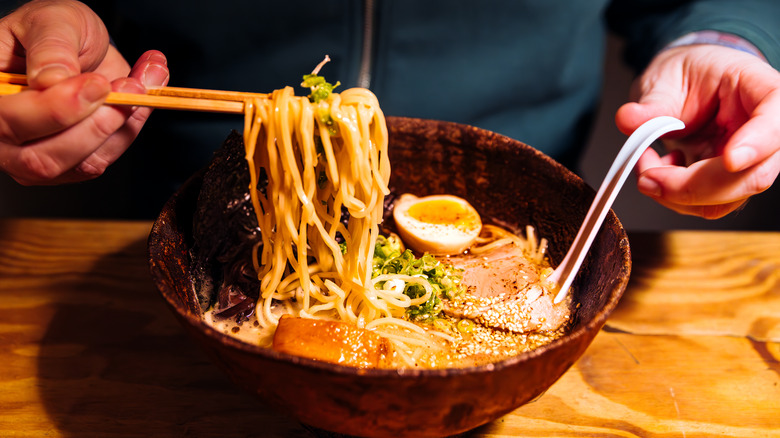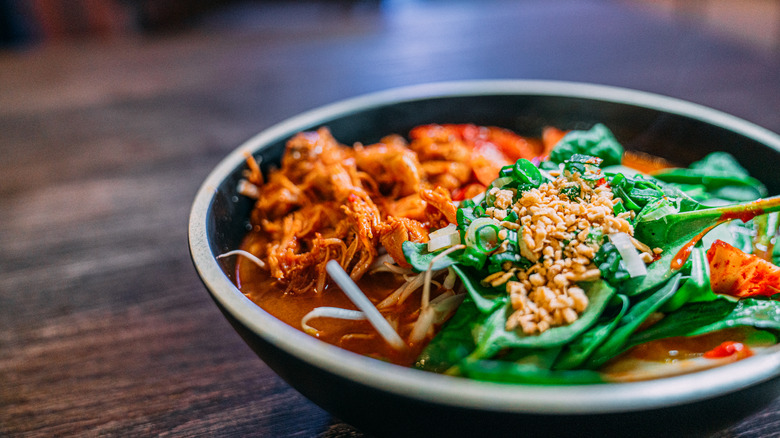Give Ramen A Spicy, Tangy Kick With One Powerhouse Addition
If you're looking to level up your plain bowl of ramen, take a page from the broke college student's playbook: Add veggies and an egg. But if you really want to make your taste buds sing, make one of those vegetable choices kimchi, the spicy fermented Korean delicacy that has the power to turn ho-hum noodles into one humdinger of a dish.
To infuse the ramen with kimchi's flavor, you want to actually cook the noodles in some kimchi-embellished juice. To get started, add a little cooking oil, some chopped green onions, a generous portion of garlic, and some cooking oil to a pan. This should simmer for about a couple of minutes or so to heat up the veggies. Then, pour in some kimchi stock, plus Sriracha, chili paste, or Korean chili powder, to raise the recipe's moisture quotient and give the fiery cabbage even more burn. Ideally, you'll have enough liquid in the pan to cook a serving or two of dry ramen noodles.
If you're hungry and ready to dig in, you can finish your cooking activities here. However, if you really want to make this one epic dish, you'll want to take note of some possible upgrades.
Leveling up your kimchi ramen
To make your kimchi ramen even more satisfying, that you'll add some proteins, like slices of pork and a hard-boiled egg or two, kinda goes without saying. These ingredients lend extra heartiness to the dish that makes it a stick-to-your-ribs meal. For texture, add baked tofu, sautéed mushrooms, and sesame seeds. And speaking of sesame, a little sesame oil drizzled into this dish tastes super yummy, so leave it out at your own risk.
As for the traditional fermented cabbage, you can just go with store-bought kimchi if you're pressed for time. If time isn't an issue and you want to reduce animal-based protein in your diet, you might consider making a vegan kimchi. If you take this route, you'll also want to lose the egg and the pork in favor of steamed vegetables or sliced tofu or mushrooms. Or, you may want to try some other types of kimchi, like cubed radish, green onion, cucumber, or bok choy kimchi. For a fall-flavored twist, apple kimchi might also be tasty, too.
The other thing you'll want to consider when making this dish is that it can be quite spicy. If you don't want to tone down the flavor you get from the spice but aren't anxious to burn your tongue, either, then think about experimenting with additions like coconut milk. It'll add a creaminess to the dish that makes it more satisfying from a textural standpoint (and kinder to your tongue), without taking away from the kimchi's spiciness. The other option you have is to dilute the kimchi juice. Substitute half of the liquid by adding a stock, like beef or chicken. Not only does this cool down some of the spice, but it'll enhance the flavor in a subtle yet powerful way.

